Flowering Heart, directed by Lee Woo-Jin. Written by Lee Woo-Jin, Kim Hyoung-Kyo, et al. Starring Nancy Kim, Jacqueline Youn, and Dami Lee. ICONIX Entertainment (). 26 episodes of 11 minutes (approx. ). Not rated.
What we have before us is a magical girl title from South Korea. Being a magical-girl franchise from outside Japan, this arguably falls into the same category as such other non-Japanese titles as Winx Club, LoliRock, or Star vs. the Forces of Evil. But, of course, you’ve likely seen plenty of South Korean animation already, as both America and Japan outsource a lot of animation to that country.
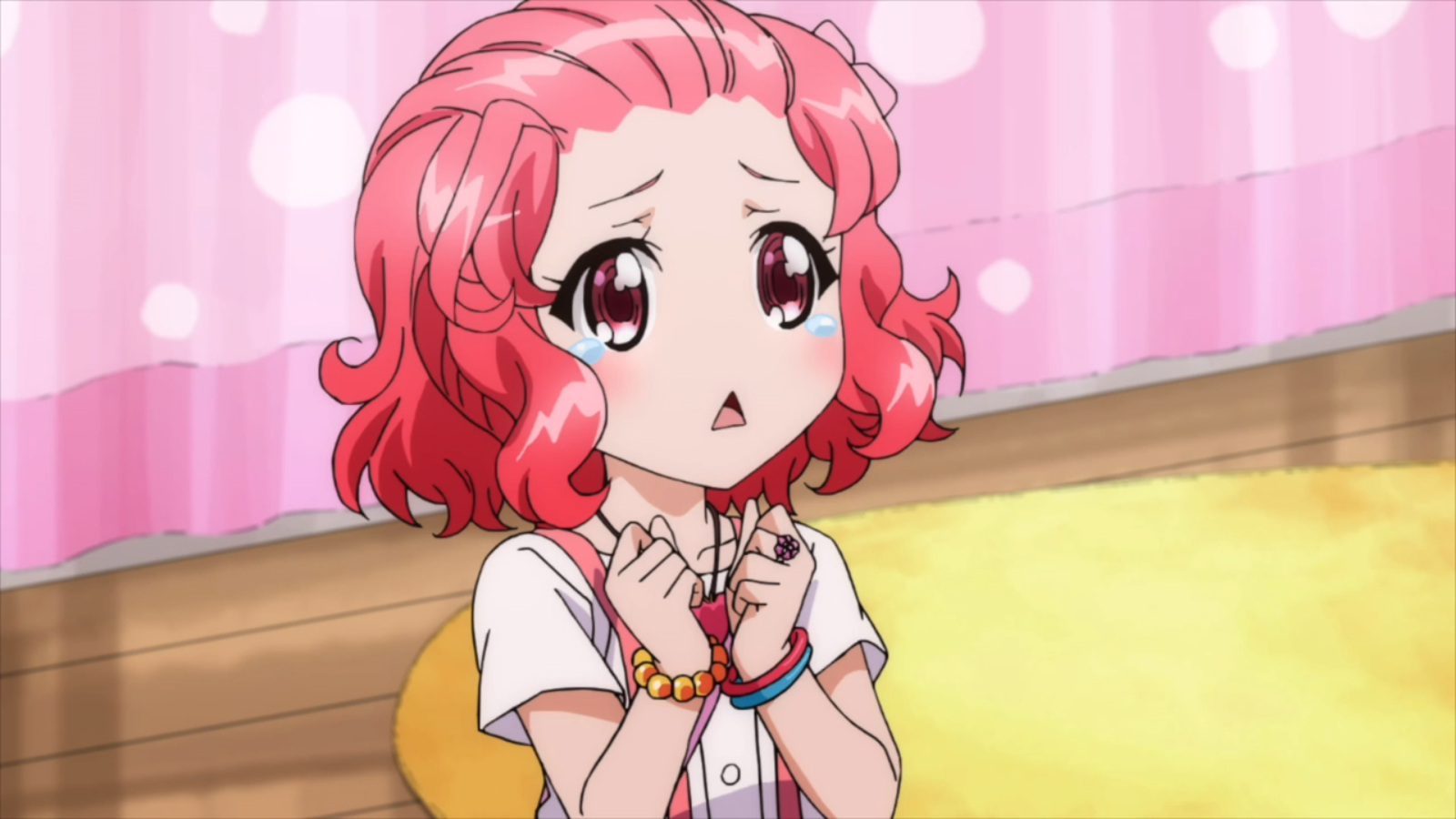
As of the time of writing, this series has two seasons, but as far as I have been able to determine, only the first is available in English. I originally found it on Amazon Prime, which hosts the English dub, but you can also watch for free on the show’s official YouTube channel.
Now here’s the confusing part: There is a dub of the whole season available, as well as a Korean version. But there are also at least a few episodes that have been left in the original Korean but subtitled in English. However, they haven’t been set aside in their own playlist, and their descriptions are entirely in Korean. Here’s the first episode with subtitles. After that … good luck. I’ve been struggling to figure out where the rest of the subs are; at least the second episode is there, and some later ones too, so possibly the whole subtitled series is buried in there someplace.
A Note on Versions
If you can find them, I recommend the subs over the dubs, not only because I’m a weeb and therefore prefer subs as a matter of course, but also because, in a comparison of the Korean with the English version of the first episode, the Korean seemed to have a faster pace and a more upbeat, energetic feel. Not only that, but it still has the original advertisements for the merchandise, which is fun: Watching magical girls from America, where the original ads are usually removed, it’s easy to forget how merchandise-driven this genre typically is.
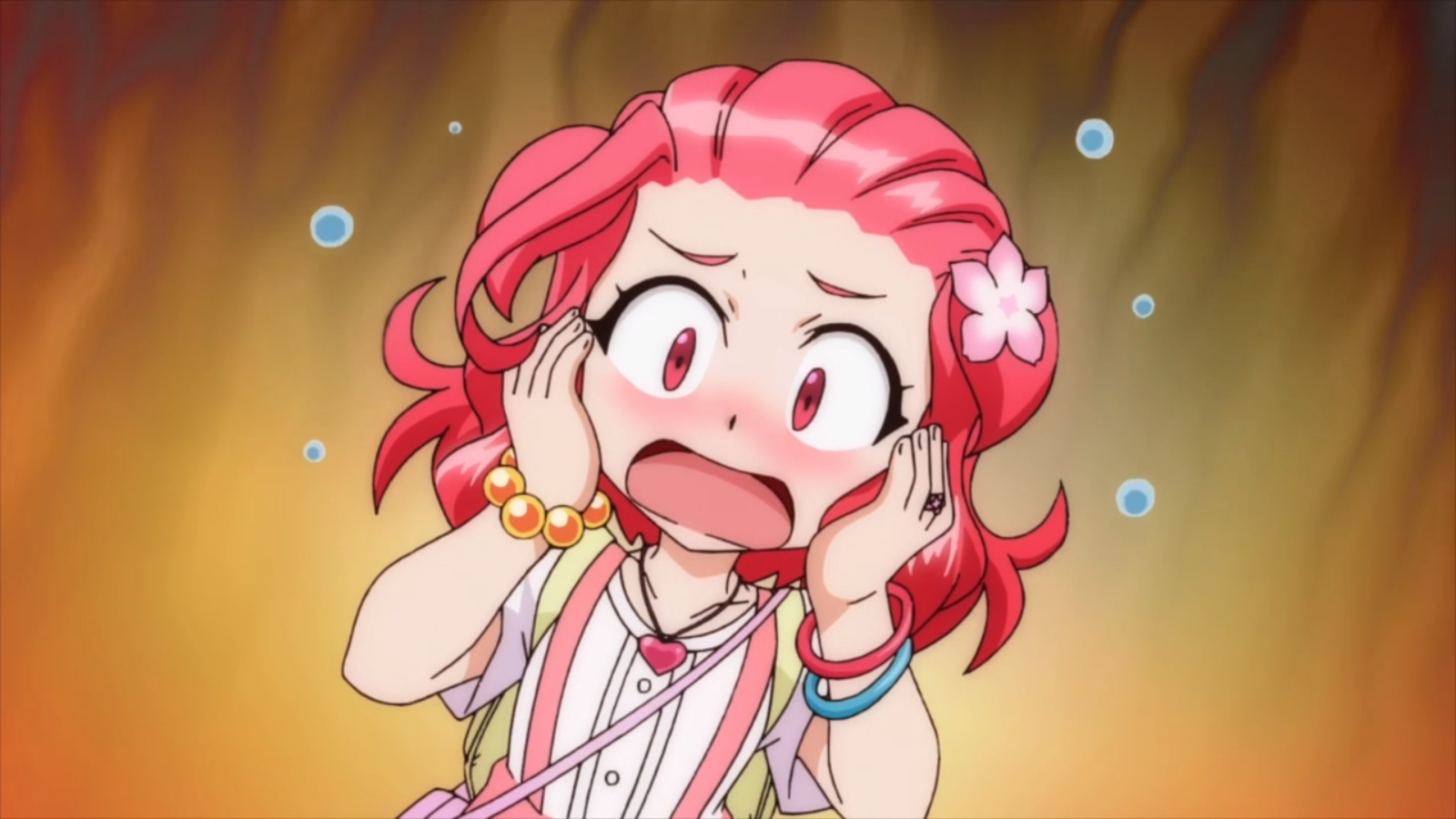
Anyway, if you are interested in checking out this series, I recommend watching the sub of the first episode and deciding from there whether to stick with it.
Synopsis
Flowering Heart is not a masterpiece by any stretch of the imagination, but it’s so sweet and girly that it’s hard not to like it. If you’re a frequent reader here, you are probably aware that I often complain about how the magical-girl genre has become grim and moody in the wake of Puella Magi Madoka Magica, but Flowering Heart is definitely a magical-girl show of the old school, taking inspiration probably primarily from Minky Momo and the Studio Pierrot titles. It’s as if the Nineties never happened.
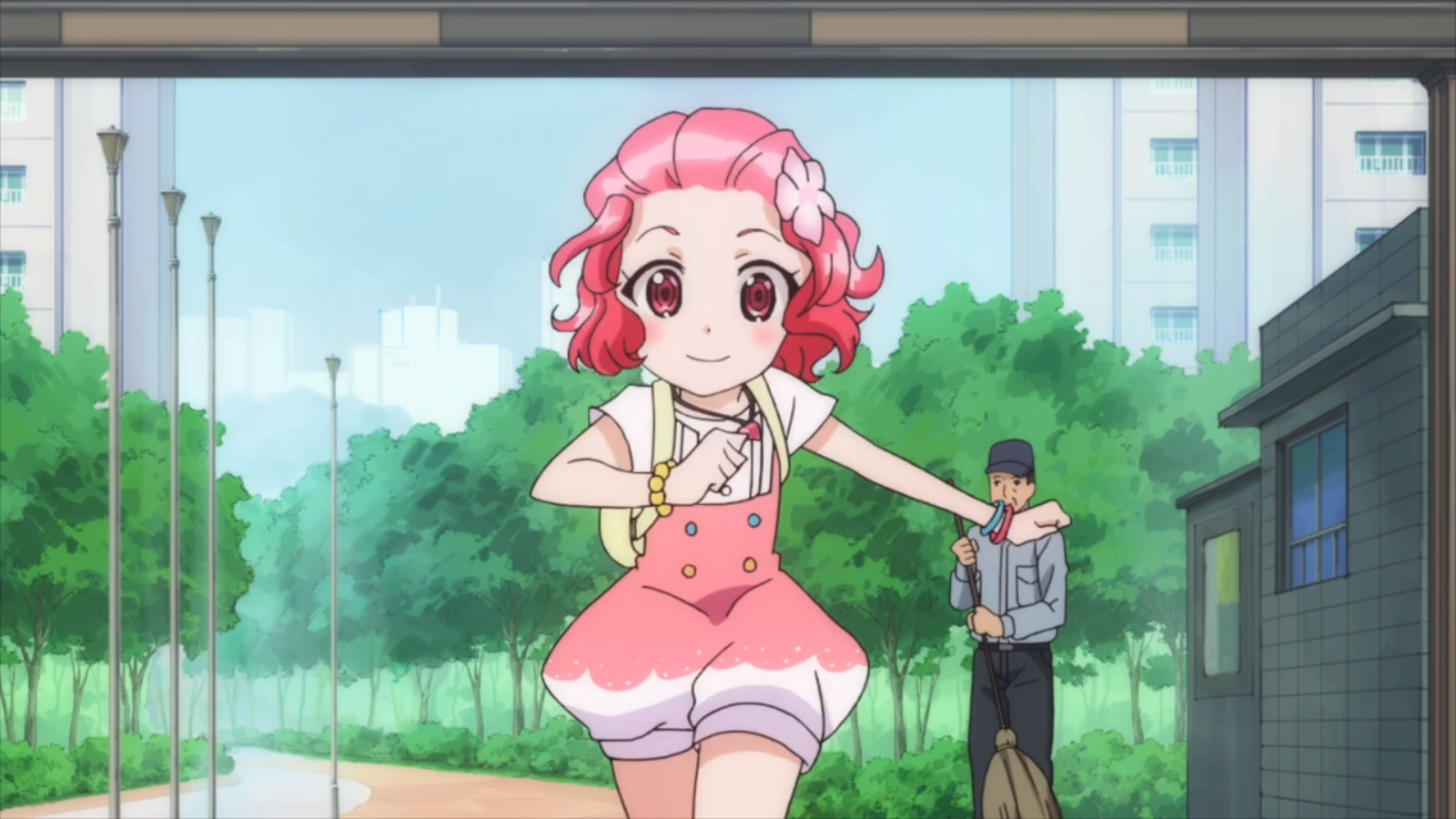
Characters
The story follows three fifth-grade girls in Seoul whose personalities and color-coding make them a typical magical-girl team. Ari, having pink hair and clothes, is obviously the leader—pink being the color of authority in the world of magical girls. She’s energetic, cheerful, boy-crazy, and allegedly fashion-conscious, though if she really cared about fashion, she probably wouldn’t be running around in those Mickey Mouse shorts.
Her two sidekicks are the tomboyish Min and the quiet and bookish Suha. No points for guessing which is which.
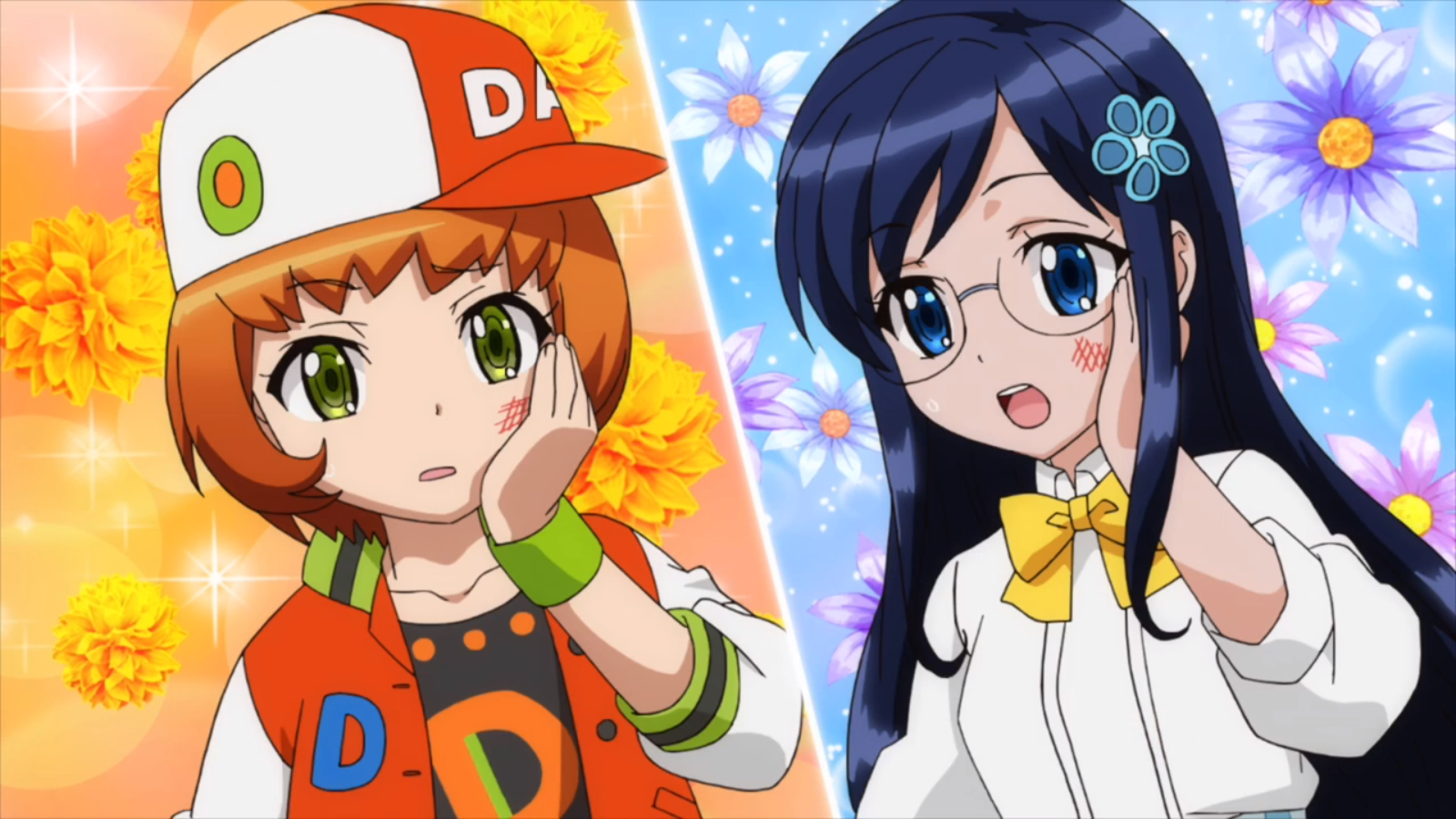
On their first day of fifth grade, these three have formed a new after-school club, the Problem-Solving Club, which seeks to help all and sundry with whatever problems they may be having, though the pesky boys in their class take advantage of the girls’ charity to make them do their homework.

Magical Shenanigans
Their efforts at do-goodery soon get a magical boost, however: Ari discovers a talking blue hamster and a magic ring lying on the ground outside the school. The hamster, whom Ari calls Tubby, is actually the banished Prince Chess of the magical Flowering Kingdom.
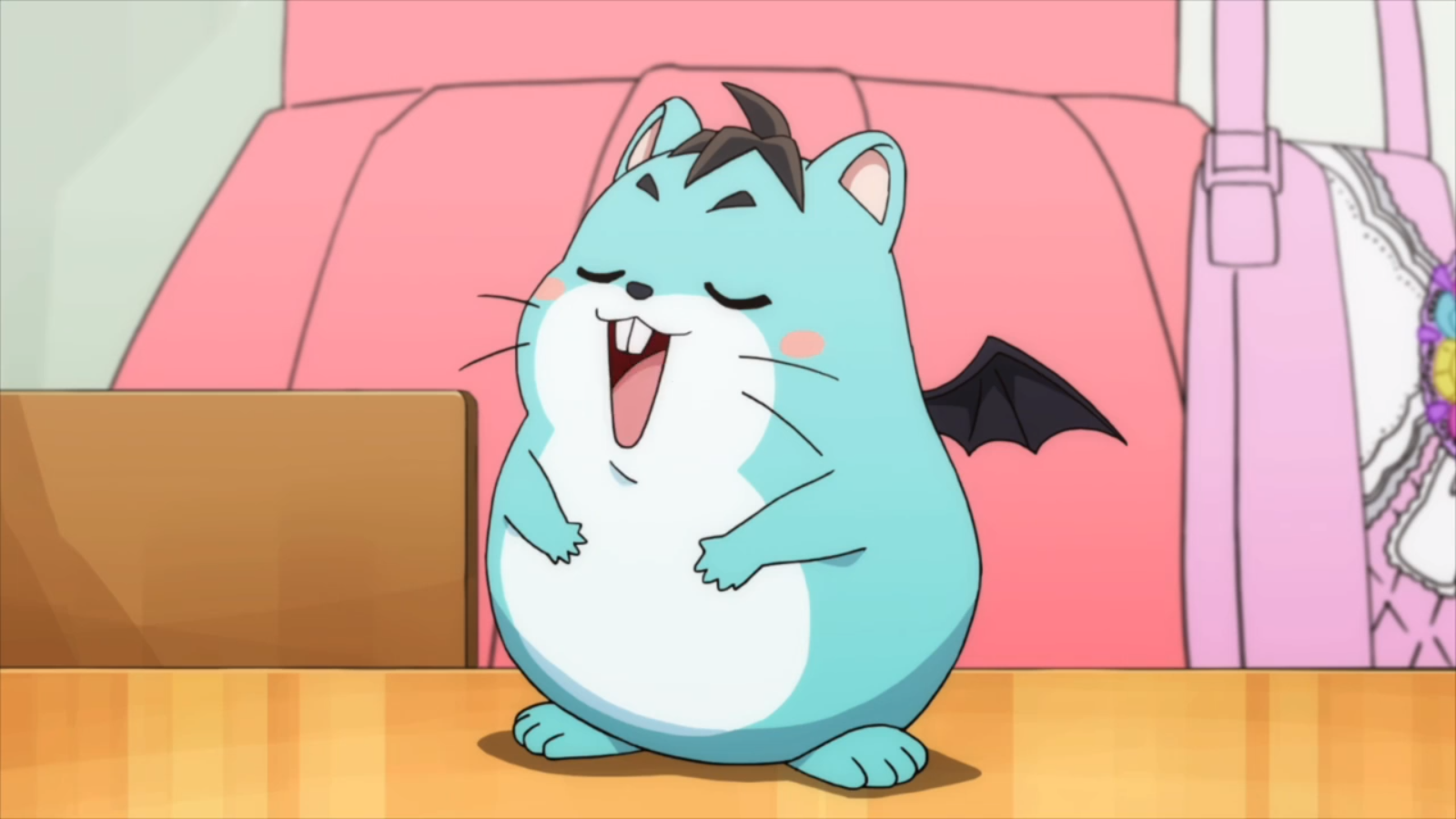
Ari dons the magic ring, and Min and Suha soon get rings to match. These rings give them the ability to transform into adults and use their adulting powers to help people. Solving problems in this way produces “hopeful energy,” which the girls can able to transmit to the Flowering Kingdom.

The Backstory
The backstory goes like this: The evil queen of the Flowering Kingdom, Canaby (fan sites call her Cannabis, but the official site has Canaby, so I’ll take their word for it), wants to destroy a magical tree called the Heart Flower, but she can only do so by gathering “hopeless energy” from the human world. For that purpose, she has recruited her younger son, Prince Trump, a blond guy with a comb-over, who had formerly been banished to the human world, along with his talking cat, years before.

Sorry. I will refrain from political jokes.
Prince Trump and Shuel
Anyway, when it turns out that Trump is even slower at gathering hopeless energy than he is at building a wall, Canaby sends to Earth a young girl named Shuel to assist him. Shuel was formerly engaged to marry Prince Chess, but now that Canaby intends to checkmate Chess and instead install Trump as the God-Emperor, she promises Shuel that she can marry Trump instead. For her part, Shuel apparently doesn’t care who her betrothed is just so long as she gets to be the crown princess, so she readily agrees to gather hopeless energy from the human world.
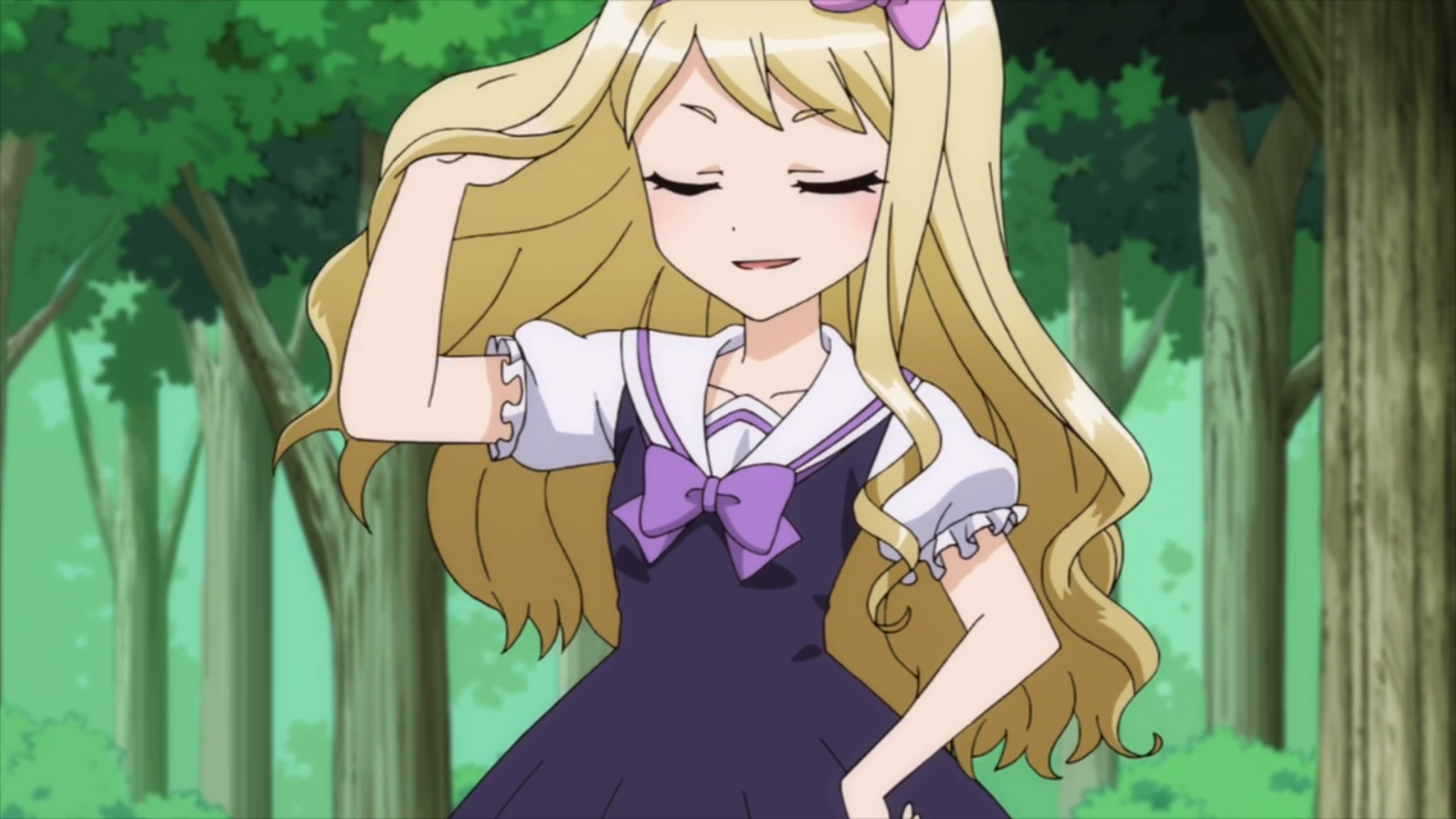
Discussion
This is, unfortunately, all the backstory we get. Why Canaby turned evil, why she originally banished Trump, what the Heart Flower is, and why Canaby wants to wither it? Don’t ask those kinds of questions. The story isn’t exactly hard to follow because it isn’t exactly original, but it still could have benefited from a few extra sentences here and there to fill us in on the rationale behind it all.
The Love Story
While on the human world, Trump is enrolled in the sixth grade. Ari bumps into him on the way to school and falls in love at first sight.
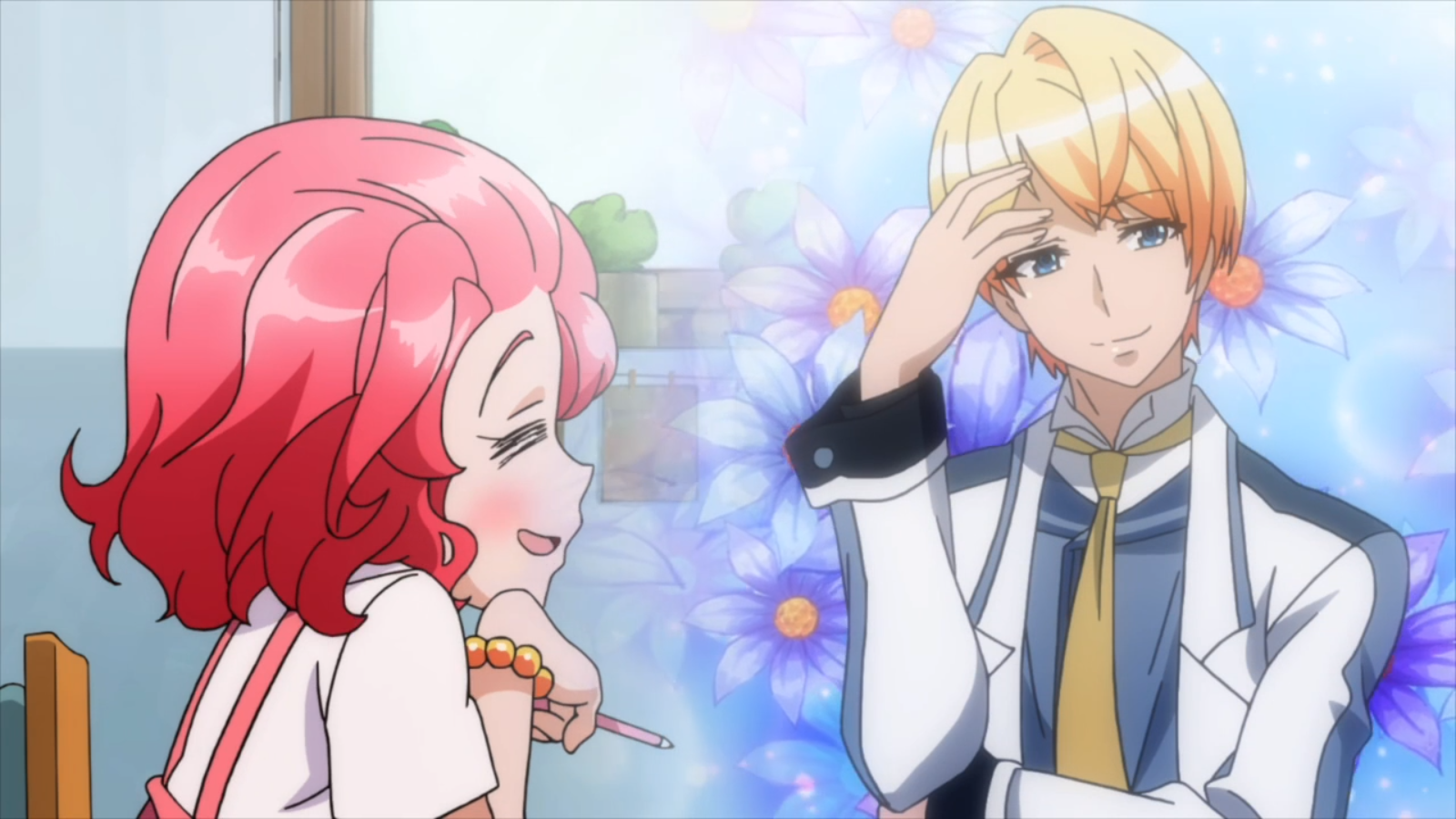
This will naturally produce some confusion in the viewer: Ari and her pals are drawn in puni plush style, but nobody else is, so she looks six years old while Trump looks like a grown adult. Make of that what you will.
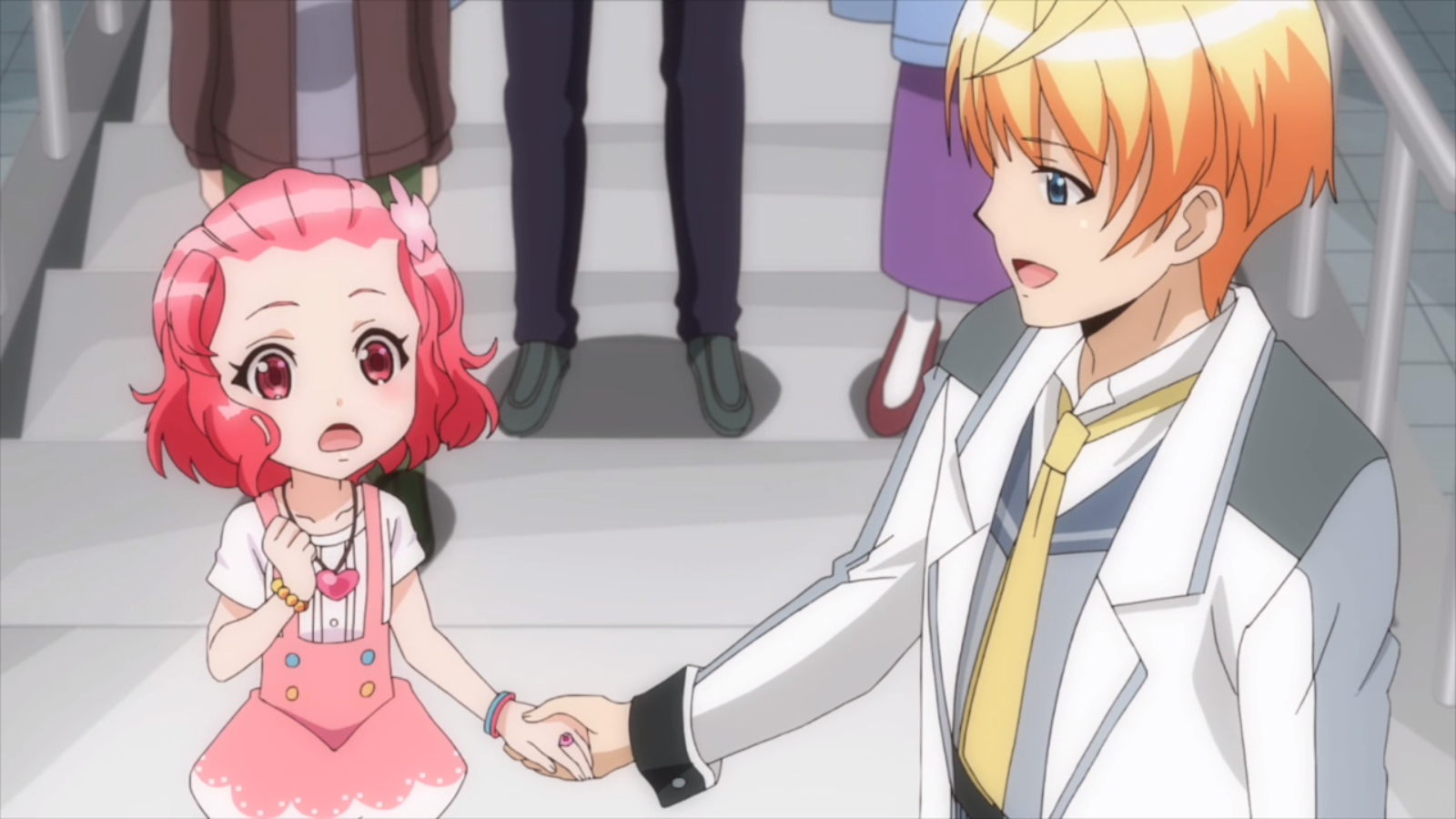
Just once, I’d like to see a cartoon that depicts elementary school halfway like real life. Girls typically hit their growth spurts before boys do: If the girls in this show were starting to look like teenagers while the boys still looked like little kids, that would be more realistic. But hey, it’s a show for girls, and girls like tall guys, so the guys are tall. Apparently, in the world of Flowering Heart, everyone instantly doubles in height at the age of twelve. Or something.
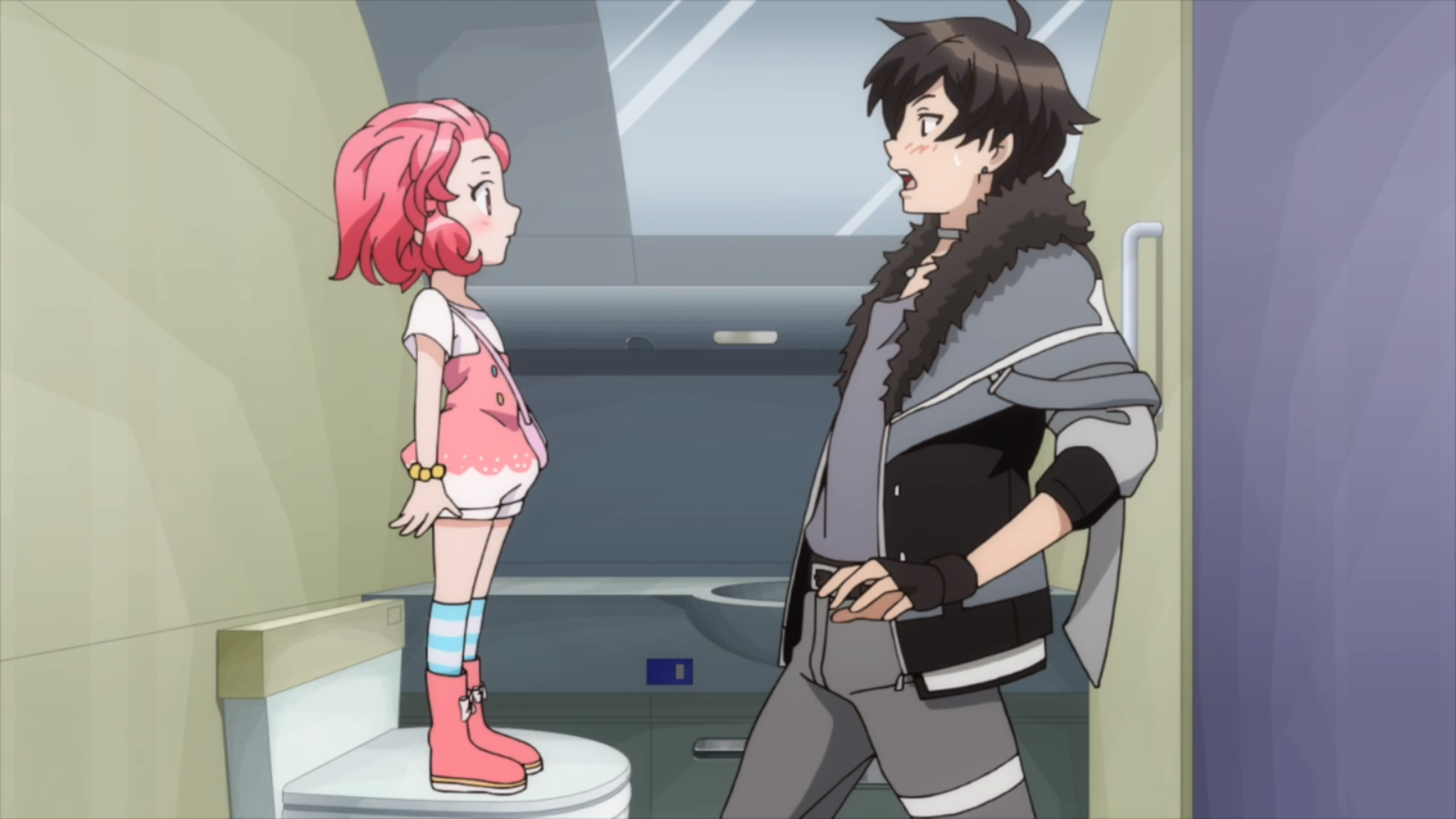
Some other playground romance gets thrown in here, too. One of Ari’s classmates is apparently crushing on her, though nothing much comes of it. Chess occasionally gets his human form back, so there’s a halfhearted love triangle between Ari, Chess, and Trump that never quite gets fully developed.
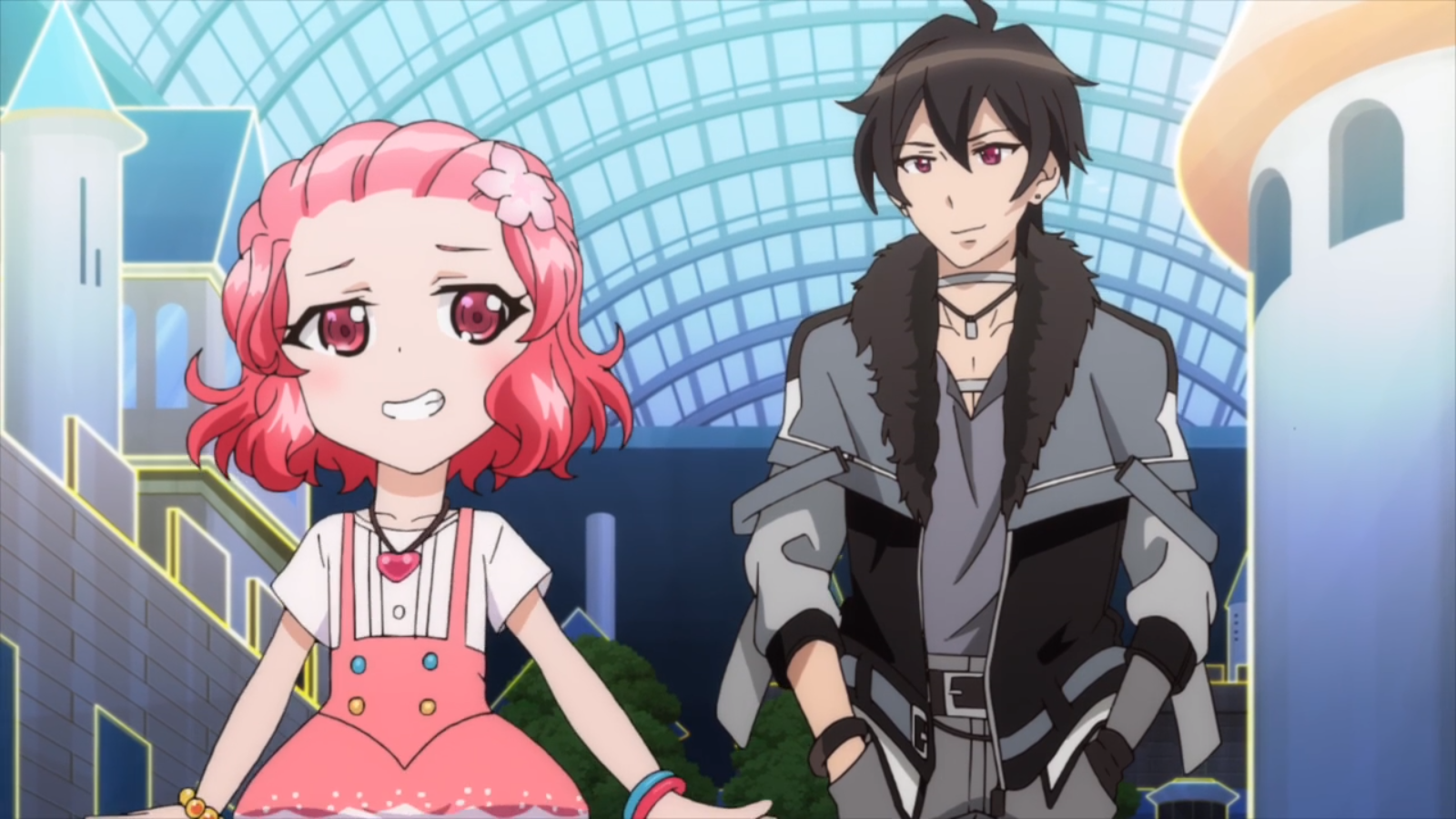
Chess falls for Ari, but exhibits almost no jealousy over Ari’s crush on his brother. Although the show’s creators stick to fomula, on the romance side of things, they apparently forgot how the formula is supposed to work: Trump is too much of a wimp to be the excessively slick smooth-talker he ought to be, and Ari and Chess, though they have the occasional squabble, don’t fight nearly enough to get the sparks flying.
And I’m also not sure why all the boys are chasing Ari when it should be obvious that the spunky and tomboyish Min is best girl. But whatever.

Discussion
The series looks good over all, though—aside from its use of the Korean language and setting—it fails to distinguish itself from the anime that inspired it. Unlike the other non-Japanese shows I named above, it doesn’t develop its own style, though this is unsurprising, given how heavily Japanese and Korean animation depend on each other. The animation is a little stiff, but Flowering Heart has no action to speak of, so it doesn’t much matter.
Standard Formula
The story develops as you might expect: Trump gives up on his mission too early and ends up doing mostly nothing for much of the show’s run, but, fortunately, Shuel is on hand to play villain in his place. A typical episode focuses on Shuel demoralizing somebody and then Ari and company transforming to help out and bring encouragement. The conclusion of the first season is reasonably satisfying, though some events that happen around the climax don’t have enough of a purpose, especially an impressively animated burst of hopeless energy that has no apparent consequences.
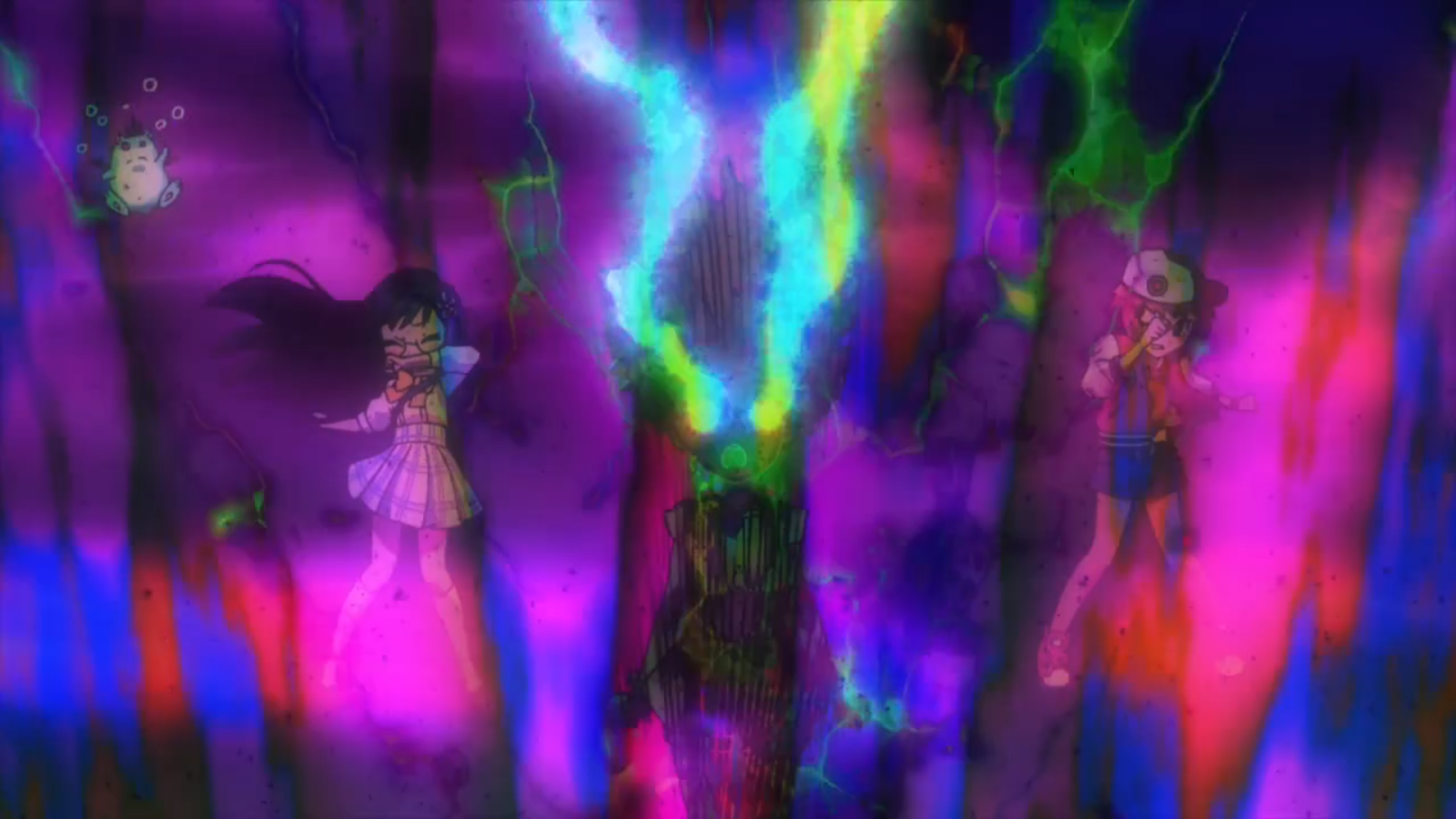
The Finale
The last four episodes are thick—too thick, I thought—with sentimentality surrounding pet dogs. There may be a cultural reason for this; dogs are still on the menu in many Korean eateries, but some activist organizations in the country have been trying to change that. From the American standpoint, the maudlin treatment of pets merely looks saccharine, but from the Korean standpoint, this may be a bit of pro-dog propaganda.
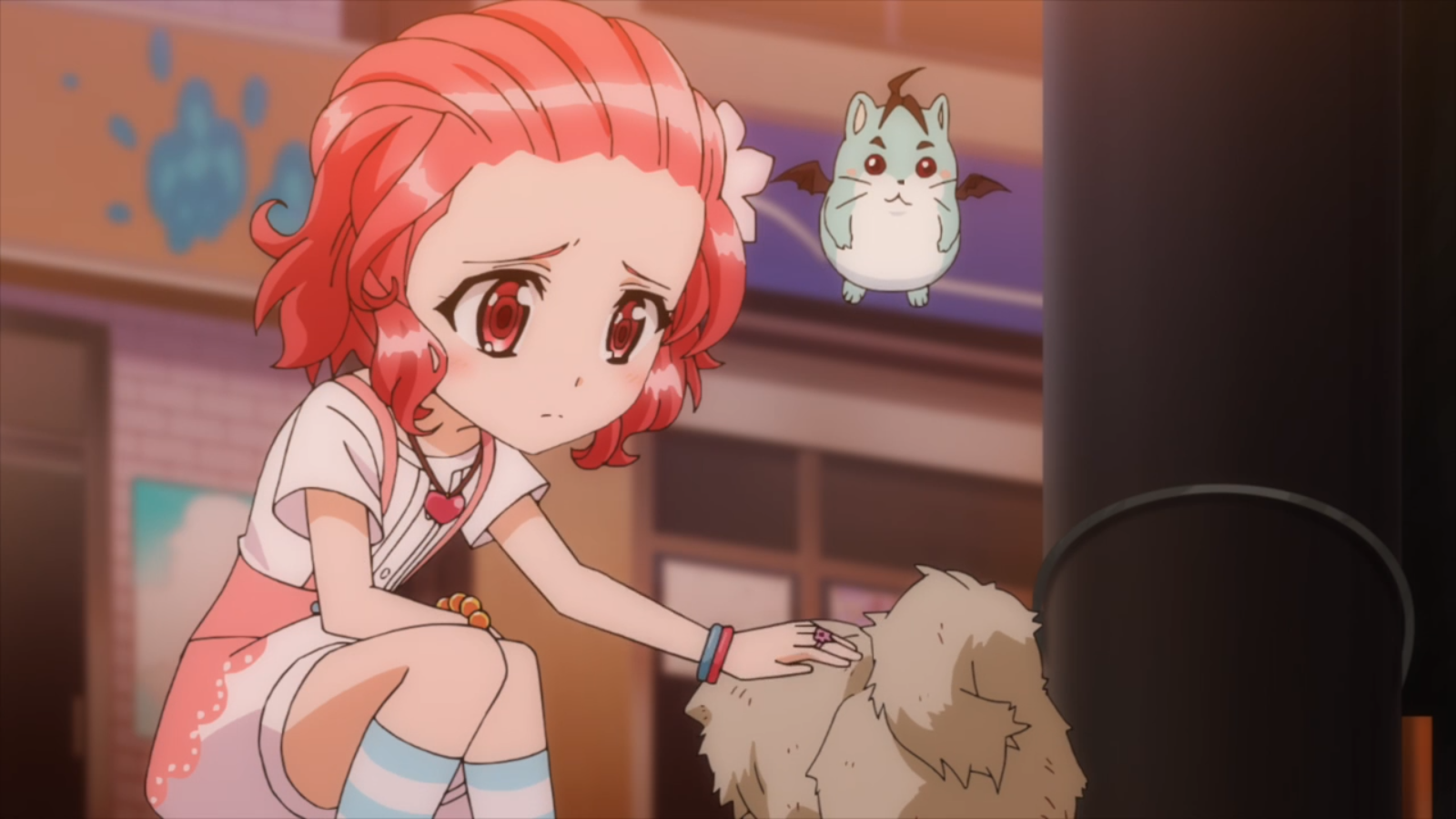
Conclusion
When you get right down to it, there’s not a lot going on here, but it’s a good show for kids without being too sluggish or obnoxious for adults. It’s girlish and cutesy, but not excessively so. As brainless entertainment, I give it a thumbs up. The message of the show is generally positive also, encouraging hard work without any empty statements about “believing in yourself.” It’s reminiscent of Shugo Chara’s core message of “stop being such a wuss,” only delivered more gently. It is anti-discouragement and pro-effort, which makes it a good series for kids in my book.
I would recommend this for young girls. Young boys, on the other hand, might not like its girlish atmosphere. Older viewers with an interest in magical girls might enjoy it as well, but it’s unlikely to win over anyone not already in that niche.



